
How to Use ESP32-POE2: Examples, Pinouts, and Specs
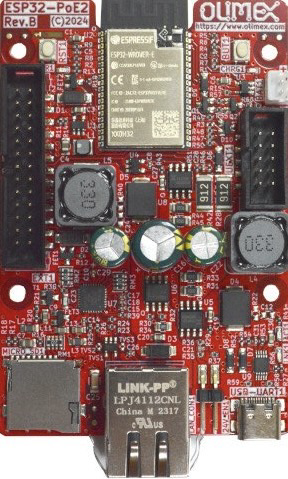
 Design with ESP32-POE2 in Cirkit Designer
Design with ESP32-POE2 in Cirkit DesignerIntroduction
The ESP32-POE2 is a robust microcontroller board designed by Olimex that combines the capabilities of the ESP32-WROVER module with the convenience of Power over Ethernet (PoE). This board is ideal for Internet of Things (IoT) and automation projects that demand both wireless and wired network connections, with the added benefit of powering the device through the Ethernet cable.
Explore Projects Built with ESP32-POE2
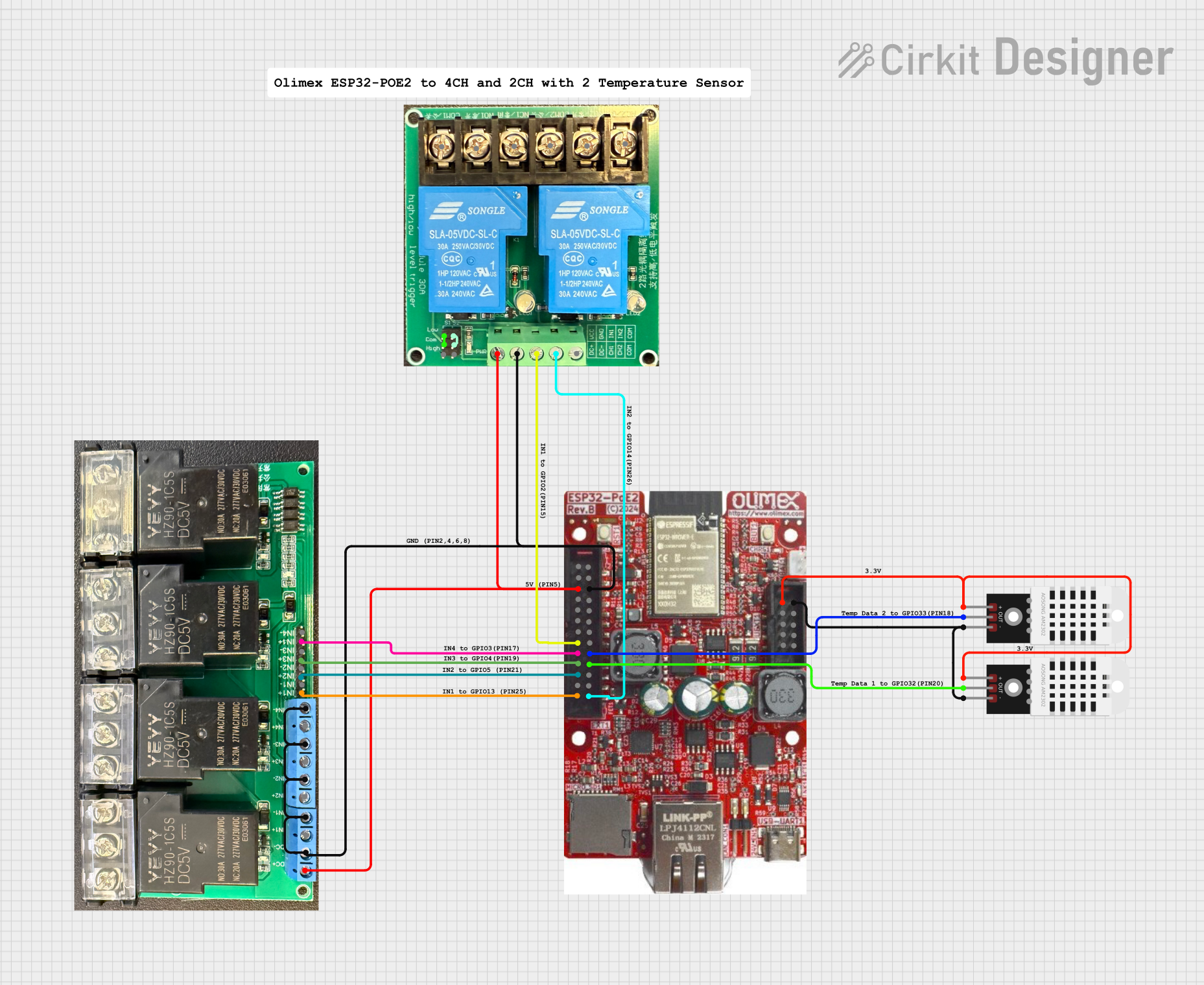
 Open Project in Cirkit Designer
Open Project in Cirkit Designer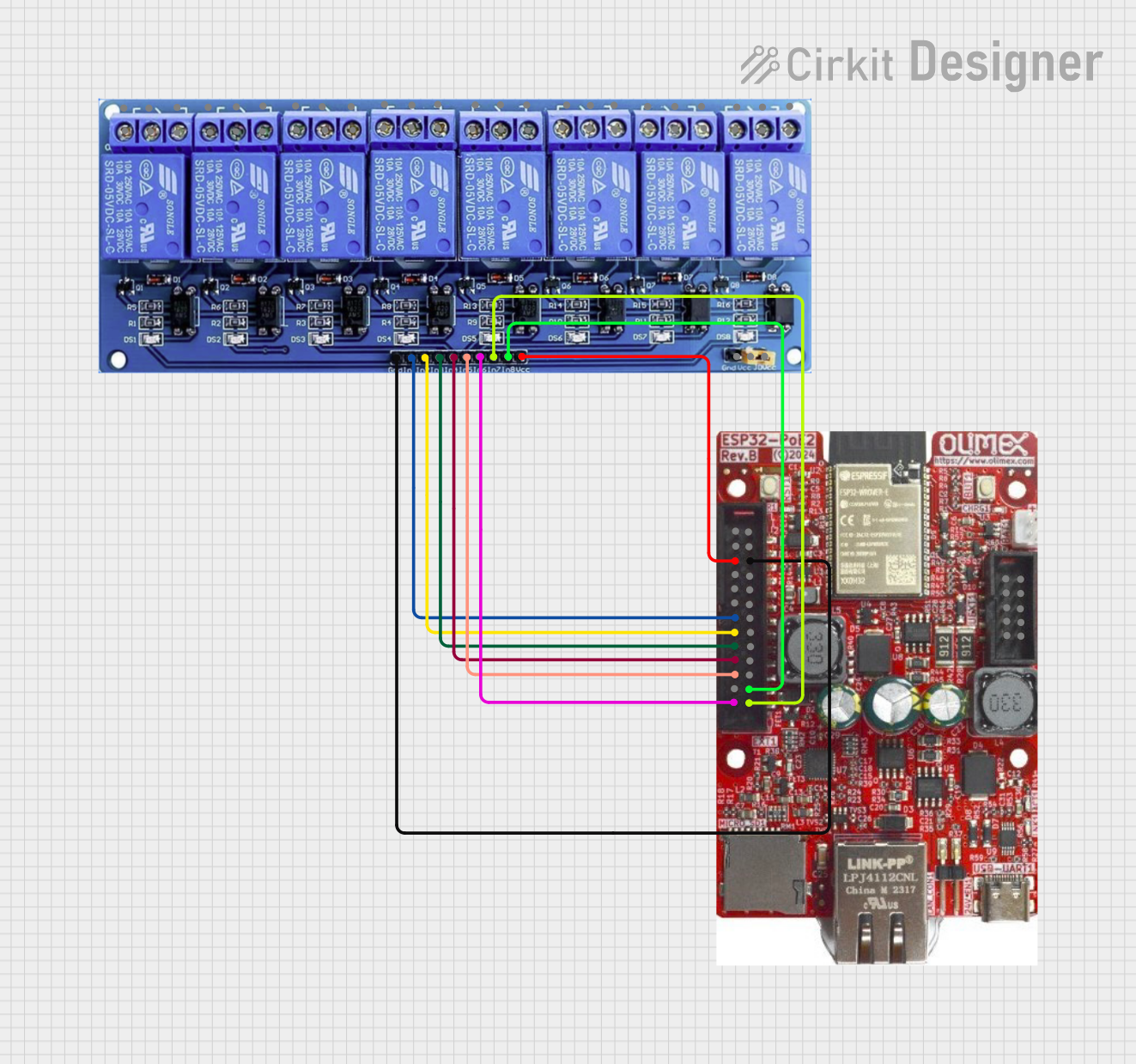
 Open Project in Cirkit Designer
Open Project in Cirkit Designer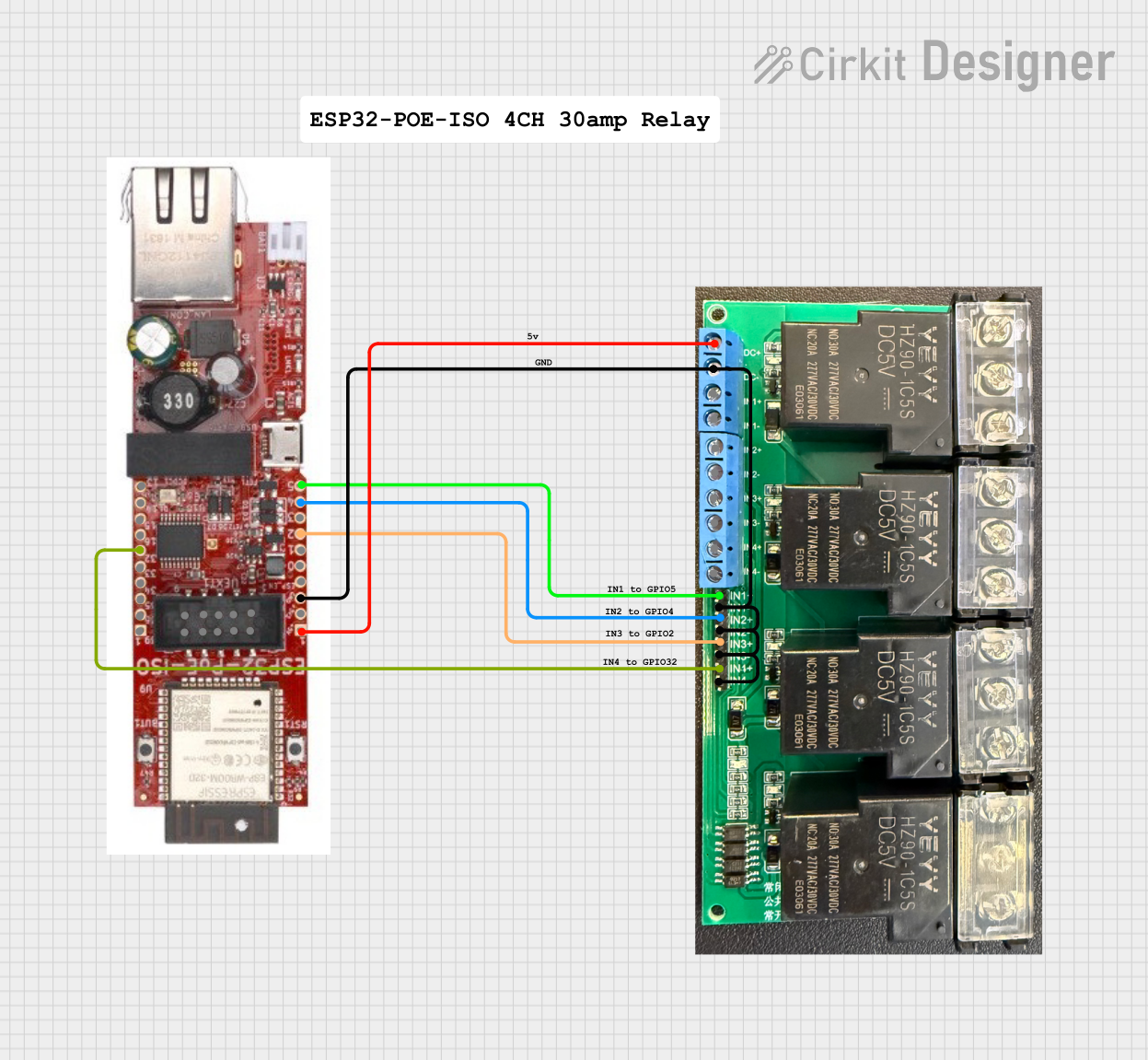
 Open Project in Cirkit Designer
Open Project in Cirkit Designer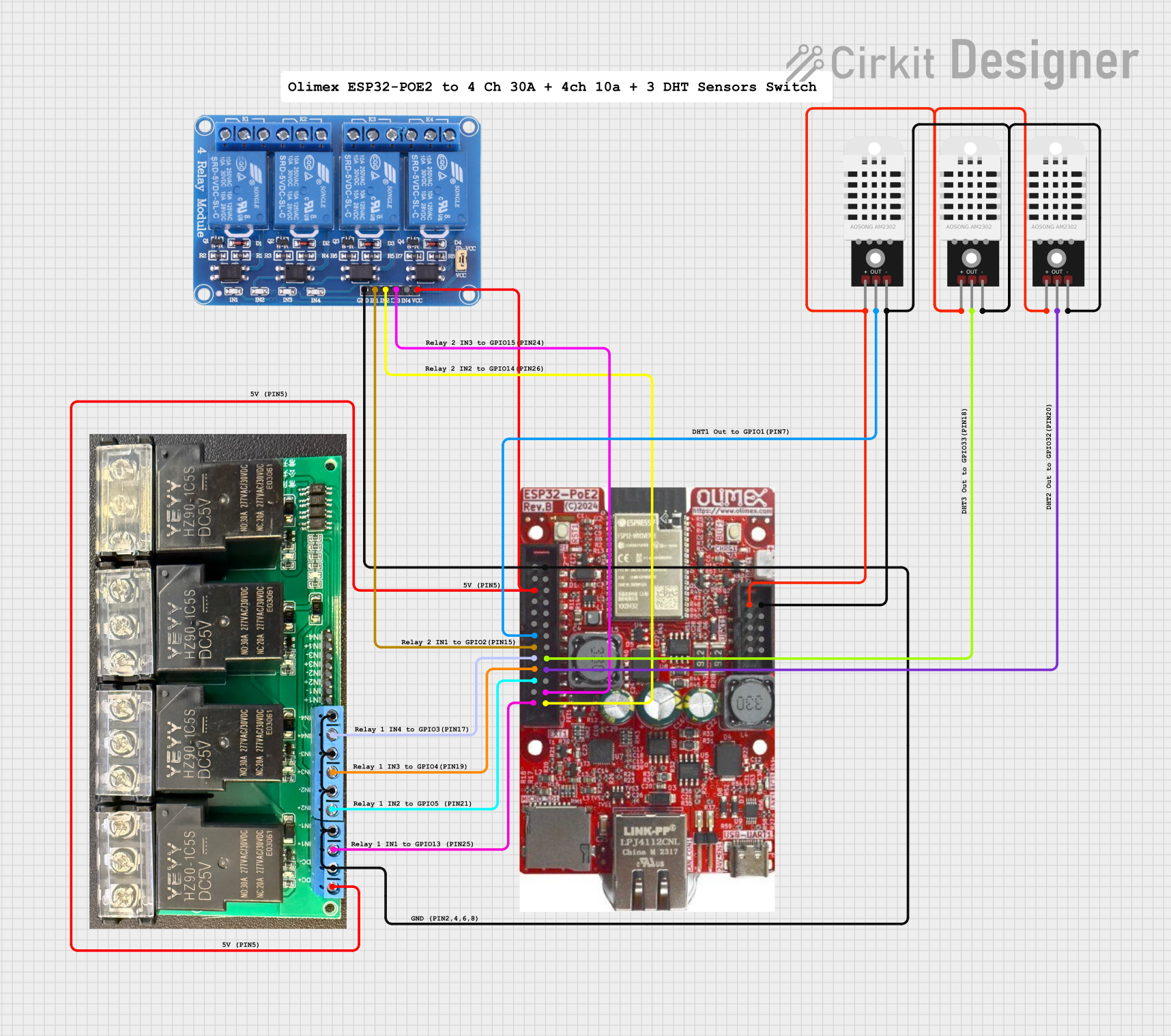
 Open Project in Cirkit Designer
Open Project in Cirkit DesignerExplore Projects Built with ESP32-POE2

 Open Project in Cirkit Designer
Open Project in Cirkit Designer
 Open Project in Cirkit Designer
Open Project in Cirkit Designer
 Open Project in Cirkit Designer
Open Project in Cirkit Designer
 Open Project in Cirkit Designer
Open Project in Cirkit DesignerCommon Applications and Use Cases
- Smart home automation
- Industrial IoT
- Remote sensors and monitoring
- Networked devices in locations without easy access to power outlets
Technical Specifications
Key Technical Details
- Microcontroller: ESP32-WROVER
- Operating Voltage: 3.3V
- Input Voltage (PoE): 37V to 57V
- Input Voltage (USB): 5V
- Flash Memory: 4MB
- SRAM: 520KB
- Wi-Fi: 802.11 b/g/n
- Bluetooth: v4.2 BR/EDR and BLE
- Ethernet: 100Mbps
Pin Configuration and Descriptions
| Pin Number | Function | Description |
|---|---|---|
| 1 | GND | Ground |
| 2 | 3V3 | 3.3V output |
| 3 | EN | Chip enable. Keep it high (3.3V) to operate. |
| ... | ... | ... |
| n | IOxx | General purpose IO pin |
Note: The full pinout for the ESP32-POE2 is extensive and should be referred to in the official Olimex documentation for complete details.
Usage Instructions
How to Use the Component in a Circuit
Powering the Device:
- The ESP32-POE2 can be powered via the Ethernet cable when connected to a PoE-compliant router or switch.
- Alternatively, you can power the board through the micro USB port.
Connecting to a Network:
- For Ethernet, connect an Ethernet cable from your PoE router or switch to the RJ45 port on the ESP32-POE2.
- For Wi-Fi, configure the network credentials in your code to connect to a wireless network.
Programming the Board:
- Use the micro USB port to connect the ESP32-POE2 to your computer.
- Program the board using the Arduino IDE or other compatible development environments.
Important Considerations and Best Practices
- Ensure your network switch or injector is 802.3af or 802.3at PoE compliant.
- Avoid exposing the board to moisture or environments with extreme temperatures.
- Follow proper electrostatic discharge (ESD) procedures when handling the board.
Troubleshooting and FAQs
Common Issues Users Might Face
Power Issues:
- Ensure the PoE source is within the specified voltage range.
- Check the micro USB cable and power source if not using PoE.
Connectivity Problems:
- Verify the Ethernet cable is properly connected and functional.
- Check Wi-Fi credentials and signal strength for wireless connections.
Solutions and Tips for Troubleshooting
Board Not Powering On:
- Check all power connections and sources.
- Measure the voltage at the 3V3 pin to ensure power is being supplied.
Cannot Upload Code:
- Ensure the correct board and port are selected in your development environment.
- Press the BOOT button on the board when initiating the upload.
FAQs
Q: Can the ESP32-POE2 be powered without PoE?
- A: Yes, it can be powered via the micro USB port.
Q: Does the board come with pre-installed software?
- A: The board typically comes with factory-installed firmware, but it's recommended to upload your own code for specific applications.
Q: Is the ESP32-POE2 compatible with Arduino IDE?
- A: Yes, it is compatible with the Arduino IDE. Make sure to install the ESP32 board package.
Example Code for Arduino UNO
#include <WiFi.h>
// Replace with your network credentials
const char* ssid = "your_SSID";
const char* password = "your_PASSWORD";
void setup() {
Serial.begin(115200);
// Connect to Wi-Fi
WiFi.begin(ssid, password);
while (WiFi.status() != WL_CONNECTED) {
delay(500);
Serial.println("Connecting to WiFi...");
}
Serial.println("Connected to WiFi");
}
void loop() {
// Your code here
}
Note: This example demonstrates how to connect the ESP32-POE2 to a Wi-Fi network. For Ethernet and other functionalities, refer to the ESP32 libraries and Olimex documentation.
Remember to wrap your code comments to limit line length to 80 characters, ensuring readability and maintainability.